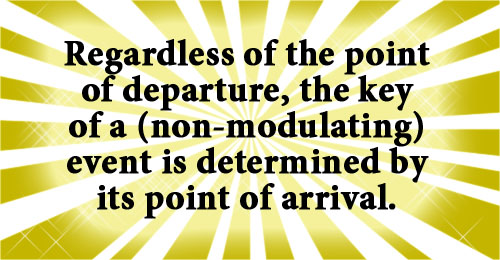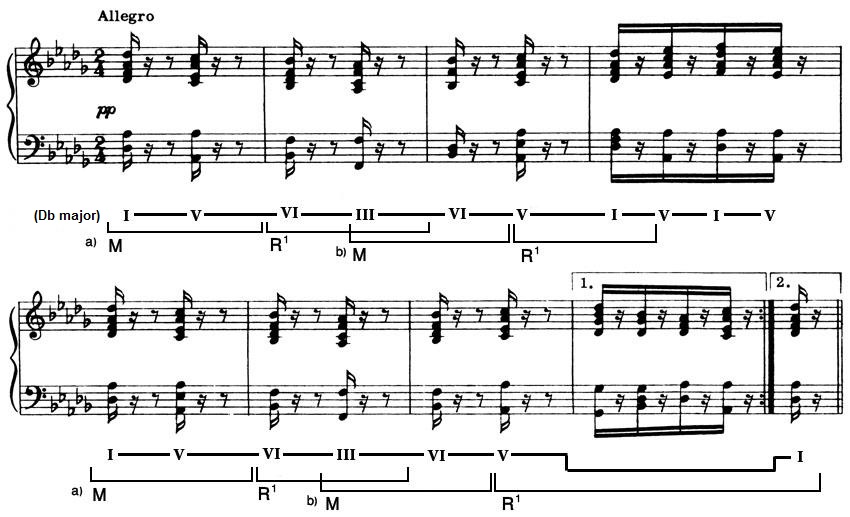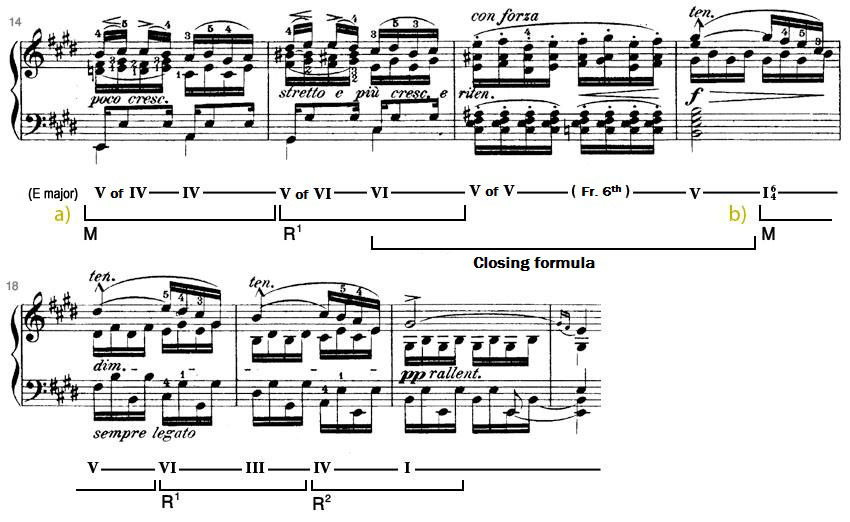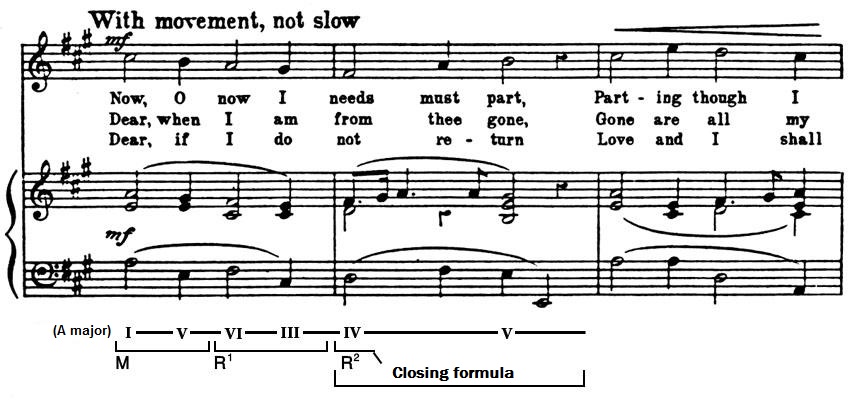1.3 - A practice of analysis in the tonal harmonic discourse from Bach to Wagner ||
A) FORMULAS - 1. Definition of
a formula ::
2. Presentation of
the little catalogue of harmonic vocabulary ::
3. User's guide to
the little catalogue and various instructions ::
4. Examples
illustrating the little catalogue (motifs: 1, 2, 3, 4, 5, 6a, 6b, 7, 8, 9, 10, 11, 12, 13, 14, 15, 16, 17, 18, 19, 20, motifs in combination)
B) SEQUENCES - 1. Definition of a
harmonic sequence :: 2. Classifying
sequences :: 3. Melodic
formulations: characteristic motifs :: 4. The tonal
nature of the harmonic sequence :: 5.The tripartite
structure of the harmonic sequence :: 6. A
modulating sequence or not? :: 7. Diversification
of harmonic content :: 8. The harmonic
sequence as a place of subversion :: 9. Conclusion
5. THE TRIPARTITE STRUCTURE OF THE HARMONIC SEQUENCE
1. The model.
Sometimes the model is repeated (see examples 393, 415 and 500).
2. One or several reproductions of the model.
When there are several reproductions of the model, the last of them may
be incomplete as we have already observed.
3. The closing formula.
Unless it introduces plagal content (for example, VI - IV - I, or other plagal formulas as shown following figure 11),
the closing formula generally corresponds to one or another of the
formulas from the little catalogue and therefore proves easily
identifiable due to the characteristic motif involved. However, the role
of establishing a key is sometimes filled by the arrival of another sequence which may or may not share the same
model. In the latter case, we observe a sort of mixed sequence
structure that overlaps two different types. Let us also emphasize that
the closing formula, unless it corresponds to another sequence, takes
place outside the process of imitation and begins with the final chord
of the last reproduction. In fact, the closing formula conforms to a
procedure of tonal analysis which we adopt systematically and which can
be stated as follows:

Example 418 : P.I. Tchaikovsky : Symphony no 4, op. 36, III, Trio (mm 170-176)
a) Type 4 sequence, b) type 8 sequence serving as a closing formula

Example 419 : L.V. Beethoven : String quartet, op. 18, no 1, IV (mm 301-307)
Type 2 sequence

Example 420 : F Sor : Etude for guitar, op. 6, no 8 (mm 1-10)
a) Type 9 sequence and b) type 1 sequence serving as a closing formula

On the other hand, a sequence deprived of its closing formula may find its tonal affiliation determined by the context:
Example 421 : F. Chopin : Etude, op. 10, no 3 (mm 14-21)
a) Type 8 sequence and b) type 4 sequence

In
this last example, let us note that the type 4 sequence articulated in
this manner without a closing formula still holds the power to estalish
a key. This brings up the topic of the structural effect of tonal conditioning that
tends to lead the listener, wherever possible, to cause the end of
a harmonic event to coincide with a tonic function due to the
expectation of a conclusion. Moreover, this sequence, even
isolated from all context, is spontaneously heard as I - V - VI - III -
IV - I, thereby joining a long tradition of use already evident in the
16th century.
Example 422 : J. Dowland : Now, O now I needs must part (mm 1-2)
Type 4 sequence

6. A MODULATING SEQUENCE OR NOT? 
|
